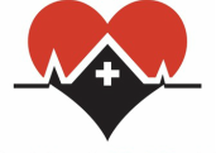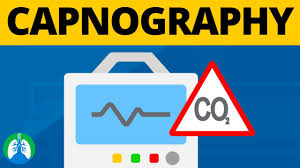Four Things About Waveform CapnographyWaveform capnography is one of the most important vital signs used to monitor a critically ill patient. The waveform capnography reading provides information regarding the tracking of ventilations, airway placement, and the measurement of carbon dioxide during exhalation. Through the use of capnography, a patient’s ventilation status is monitored in real time. Health care providers are able to identify potential breathing complications (such as airway obstruction, hyperventilation, hypoventilation, or apnea) and respond accordingly with a change in clinical management. What does waveform capnography tell us?Waveform capnography indicates how much CO₂ is present during each phase of the respiratory cycle, from inhalation to exhalation. It also displays respiratory rate. Capnography measures ventilation, rather than oxygenation. Ventilation encompasses the air movement both into and out of the lungs, while oxygenation lets you know how much oxygen is inhaled by the lungs and reaches the bloodstream. Monitoring VentilationCapnography waveforms reflect the amount of CO₂ in exhaled air, known as the end-tidal carbon dioxide or EtCO₂. End-tidal carbon dioxide (EtCO₂) is the level of carbon dioxide that is released at the end of an exhaled breath. EtCO₂ levels reflect the adequacy with which carbon dioxide (CO2) is carried in the blood back to the lungs and exhaled. Causes of Respiratory DistressDifferent capnography waveforms can indicate conditions like cardiac arrest, shock, asthma, pulmonary embolism, and emphysema. An assessment of the waveform capnography allows the healthcare provider to detect occurrences of bronchospasm, hyperventilation, or respiratory failure. By understanding the PQRST of the waveform, you can rapidly assess possible causes for the respiratory distress and provide the appropriate treatment. The PQRST includes the following: 1. Proper: means that you should know the normal readings for quantity, rate, shape and trending of EtCO2. In this case, normal means what we find in a healthy person with no metabolism, ventilation or perfusion problems. 2. Quantity: target EtCO2 value should be 35-45 mmHg. 3. Rate of ventilation: should be 12-20 breaths per minute (bpm) for adults if the patient is breathing on their own and 10-12 bpm if you’re ventilating them. Children should be ventilated at a rate of 15-30 bpm; 25-50 bpm for infants. Ventilating too quickly won’t let enough CO2 build up in the alveoli, resulting in lower EtCO2 readings. Ventilating too slowly will allow extra CO2 to build up, resulting in higher readings. 4. Shape: of the waveform should normally be a rectangle with rounded corners. Different waveform shapes can indicate different conditions. 5. Trending: of the quantity, rate and shape of EtCO2 should be stable or improving. Monitoring Treatment EfficacyThe waveform capnography reading can advise the healthcare provider on how effectively a specific treatment is working. If the treatment does not produce the desired effect or there are sudden changes to the waveform, this assessment of the reading can allow the healthcare provider to identify the issue quickly so a modification to treatment can be made a seamless and effective manner. Detection of ShockThe waveform capnography reading can also provide information about the circulation throughout the body. A decreasing EtCO₂ may indicate the early stages of hypotensive shock related to reduced cardiac output, which is the most effective time to begin treatment. Capnography can also provide feedback on the effectiveness of chest compressions during cardiac arrest. Understanding of Capnography Essential to Emergency Medical CareThe assessment of the waveform capnography reading provides important data which allow healthcare providers to effectively diagnose and treat patients in cardiac arrest, as well as respiratory distress and shock.
Would you like to learn more about certification training and our class schedule here at Help-A-Heart CPR? Or, would you like to learn more about waveform capnography and take your skills to the next level? We offer advanced training including ACLS/ALS certification and in-person ECG and pharmacology courses that will help you advance your career and optimize your personal skills and knowledge.
Comments
|
AuthorDr. Tracy A. Jones is the CEO of Help-A-Heart CPR, LLC and an American Heart Association, ASHI, and American Red Cross Master Program Trainer, Instructor, & AHA Faculty Member located in San Antonio, Texas. Archives
July 2024
Categories |
Help-A-Heart CPR, LLC | 1747 Citadell Plaza Suite 101 | San Antonio, Texas 78209 | (210) 380-5344 | [email protected]
Copyright © Help-A-Heart CPR, LLC 2024
100% Certification Acceptance
We promise your employer, school, or agency will accept the certification card we issue to you. If there is a question of acceptance or validity, simply send us an email at [email protected] with full details. We will reach out to the individual/entity and provide accreditation information. If still there’s a question, we will provide you with a full refund of your class fee. It’s that simple.
We promise your employer, school, or agency will accept the certification card we issue to you. If there is a question of acceptance or validity, simply send us an email at [email protected] with full details. We will reach out to the individual/entity and provide accreditation information. If still there’s a question, we will provide you with a full refund of your class fee. It’s that simple.
|
Communities Served
ALABAMA: Birmingham
ARKANSAS: Fayetteville, Hot Springs, Jonesboro, Little Rock NEW MEXICO: Albuquerque TENNESSEE: Knoxville TEXAS: Amarillo, Arlington, Austin, Bandera, Bastrop, Boerne, Brownsville, Comfort, Converse, Corpus Christi, Dallas/Ft. Worth, Del Rio, Dripping Springs, El Paso, Floresville, Fredericksburg, Georgetown, Harlingen, Houston, Junction, Katy, Kerrville, Kingsville, Kingwood, Laredo, Lubbock, Lufkin, McAllen, Midland, New Braunfels, Odessa, Pleasanton, Round Rock, San Angelo, San Marcos, Schertz, Seguin, Taylor, Temple, Texarkana, Tyler, Universal City, Victoria, Waco, The Woodlands |
Why Choose Help-A-Heart CPR?
1. Flexible Scheduling
2. On and Off Location Training Available 3. Casual, Fun Atmosphere 4. Best Price Guarantee 5. All Instructors are AHA and/or ARC certified 6. 5 Star Google Reviews 7. Blended Learning (Online & Skills Check) Available 8. Meets OSHA & College CPR Requirements 9. Get Certified Within 3-4 Hours 10.Certification Is Good For Two Years 11. Official AHA/ARC/ASHI Training Site 12. High Quality Safety Training! |








